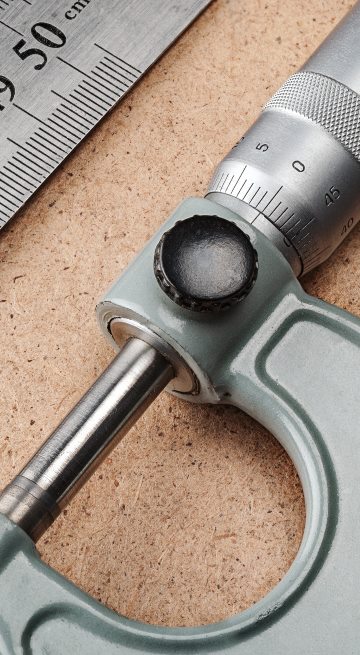
+44(0)1246 291964
info@haddonspecialsteels.co.uk


Typical Grades
Alloy grades
Carbon steel
Boron steel
Case hardening grades
Hardened and tempered
Tool steel
HSLA grades
Mild steel


Definitions and translations
| German translation | Basic Definition | |
|---|---|---|
| alloy steel | Legierter Stahl (m) | A carbon steel with alloying elements added to achieve specific properties |
| alloying element | Legierungselement (n) | Elements added to a metal to form an alloy |
| annealing | Glühen (n) | Heat treatment process whereby steel is heated and held above its recrystallisation temperature, followed by slow cooling. Generally performed to soften the material by removing the effects of work hardening from the rolling process |
| austenite | Austenit (m) | The solid solution of carbon in gamma iron |
| austenitic steel | austenitischer Stahl | Common form of stainless steel. Austenitic steels contain alloying elements which are austenitic at room temperature. They are also non-magnetic |
| bainite | Bainit (m) | Structure consisting of iron and iron carbide which forms when austenite is transformed at temperatures between the pearlite and martensite ranges |
| band saw | Bandäge (f) | |
| banding | Zeilenbildung (f) | High tensile strength steel strapping |
| bar | Stab (m) | |
| basic oxygen furnace | Blasstahlkonverter (m) | Furnace used in primary steelmaking to convert molten pig iron and raw constituents into steel |
| bend test | Biegeversuch (m) | |
| billet | Knüppel (m) | Section of steel used for rolling into bar or strip |
| blade | Flügel (m), Klinge (f) | |
| blast furnace | Hochofen (m) | Furnace used in the initial stage of steelmaking for smelting iron ore into pig iron |
| boron steel | Borstahl (m) | Alloy steel with a small addition of boron to significantly improve hardenability |
| bright anneal | Blankglühung | Annealing performed in an inert atmosphere to restrict surface oxidation and discolouration |
| bright drawn | blankgezogen | Hot rolled steel drawn through a die to impart close dimensional tolerances, create a bright clean surface and improve mechanical properties |
| carbon | Kohle (f) | Element alloyed with iron to form steel |
| carbon steel | unlegierter Stahl (m) | Steel with the main allowing element being carbon |
| carburising | Zementiering (n) | The introduction of carbon into the surface layer of a steel with a low carbon content, performed by heating the steel in a gas, liquid or solid medium containing carbon |
| case hardening | Einsatzhärten (n) | The process of surface hardening steel whilst leaving the interior unchanged |
| cementite | Zementit (m) | Iron carbide constituent of steel |
| circular saw | Kressäge (f) | |
| coil | Bandring (m) | |
| coil strip | Bandstahlbund (n) | |
| cold rolled strip | Kaltband (n) | Steel strip rolled at a temperature below the recrystallisation point, typically room temperature. The cold work increases hardness and tensile strength whilst lowering ductility. Surface finish is improved and usually tighter thickness tolerances can be achieved than by hot rolling |
| continuous casting | Stranggießen | Method of producing blooms, billets and slabs by teeming into water cooled moulds, with the casting being continously withdrawn from the bottom of the moulds in long lengths whilst teeming proceeds |
| copper | Kupfer (n) | |
| decarburisation | Entkohlung (f) | Depletion of carbon from the surface of steel, due to interaction of carbon at exposed steel surfaces with oxygen in the atmosphere when heated |
| deep drawing quality | Tiefziegüte (f) | Steel grades with high ductility, suitable for deep drawing |
| ductility | Bildsamkeit (f) | Property of steel allowing elongation and reduction of cross sectional area without fracture |
| electric arc furnace | Lictbogenofen (m) | Furnace used in the production of steel in which scrap metal is used as the main feedstock, rather than iron ore. Heat is generated by applying a large electric current to electrodes which are lowered into the charge to form an arc between the electrodes and the scrap |
| elongation | Dehnung (f) | A measure of the ductility of steel |
| fatigue | Ermüdung | The effect of repeated cycles of stress |
| fatigue test | Dauerprüfung | Test carried out to determine the number of repetitions an alternating stress can be applied to a test piece before causing failure |
| ferrite | Ferrit (m) | Solid solution of carbon in iron, found in carbon steels |
| ferritic steel | ferritischer Stahl (m) | A group of stainless steels with a chromium content in the range 12-18%, with a structure consisting largely of ferrite |
| furnace | Ofen (m) | |
| gauge | Abmessung (f), Dicke (f) | |
| grade | Güte (f) | |
| grain size | Korngroße (f) | |
| hardenability | Härtbarkeit (f) | A measeure of the ability and depth to which a steel can be hardened by quenching |
| hardness | Härte (f) | |
| heat treatment | Wärmbehandlung (f) | Process whereby steel is heated to obtain required properties, such as softening, stress relieving or hardening |
| hot roll | warmwalzen | To roll steel at a temperature above its recrystallisation point |
| hot rolled strip | Warmband (n) | Strip which has been produced by hot rolling |
| impact test | Schlagversuch (m) | A test to determine how a material responds to sudden applied stress, and determine the brittleness or toughness of a material. An impact test reports the energy needed to fracture a testpiece by pendulum hammer |
| ingot | Block (m) | A block of steel which has been cast into a mould; used for subsequent rolling into blooms, billets or slabs |
| iron | Eisen (n) | |
| length | Länge (f) | |
| martensite | Martensit (m) | Hard constituent produced when steel is cooled faster than its critical cooling rate from the hardening temperature |
| martensitic steel | martensitischer Stahl (m) | Stainless steel with a mainly martensitic structure which can be tempered to give good hardness and toughness. Untempered, however, martensite remains brittle |
| mechanical properties | Festigkeitseigenschaften | |
| melt | Schmelze (f) | |
| microstructure | Feingefüge | The structure that is observed when polished and etched steel is viewed under a microscope |
| narrow strip | Schmalband (n) | Strip produced on a precision narrow coil rolling mill |
| normalise | normalglühen | Heat treatment process to relieve internal stresses, performed by soaking steel at 800-950C (depending on analysis) to refine grains, followed by slow cooling |
| pearlite | Perlit (m) | A lamellar constituent of steel consisting of alternate layers of ferrite and cementite |
| pickle | Beize (f) | To chemically remove scale and obtain a clean surface by immersing steel in a bath of dilute sulphuric acid |
| proof stress | Dehngrenze (f) | The stress to cause a specified permanent extension in a tensile testpiece, usually 0.2% extension is quoted for steel. Tends to be quoted in steels that do not exhibit a definite yield point |
| quantity | Menge (f) | |
| reversing mill | Reversiergerüst (n) | Rolling mill which can rotate in either direction so that the workpiece can be passed forwards and backwards between a pair of rolls |
| roll | walzen | |
| rolling mill | Waltzwerk (n) | Steel is shaped by being passed between a series of rolls known as a rolling mill. Ingots, slabs or billets are rolled into a finished shape such as bar, strip, sheet or plate |
| sample | Probe (f) | |
| scrap | Schrott (m) | Basic raw material for the electric arc furnace |
| slit | Schnitz (m) | |
| stainless steel | rostfreier Stahl (m) | |
| steel | Stahl (m) | |
| strip steel | Bandstahl (m) | |
| tempering | Einvergütung (f) | Heat treatment process whereby steel is heated and held at a temperature below the transformation range, followed by suitable cooling. Performed to decrease hardness, increase toughness and achieve desired mechanical properties |
| tensile strength | Festigkeit (f) | The stress at which material fails when subject to a tensile force |
| tenstile test | Zugversuch (m) | |
| weight | Gewicht (n) | |
| wide strip | Breitband (n) | Strip produced on a wide strip mill |
| width | Breite (f) | |
| yield strength | Streckgrenze (f) | The stress at which material ceases to elongate elastically and begins to deform plastically |